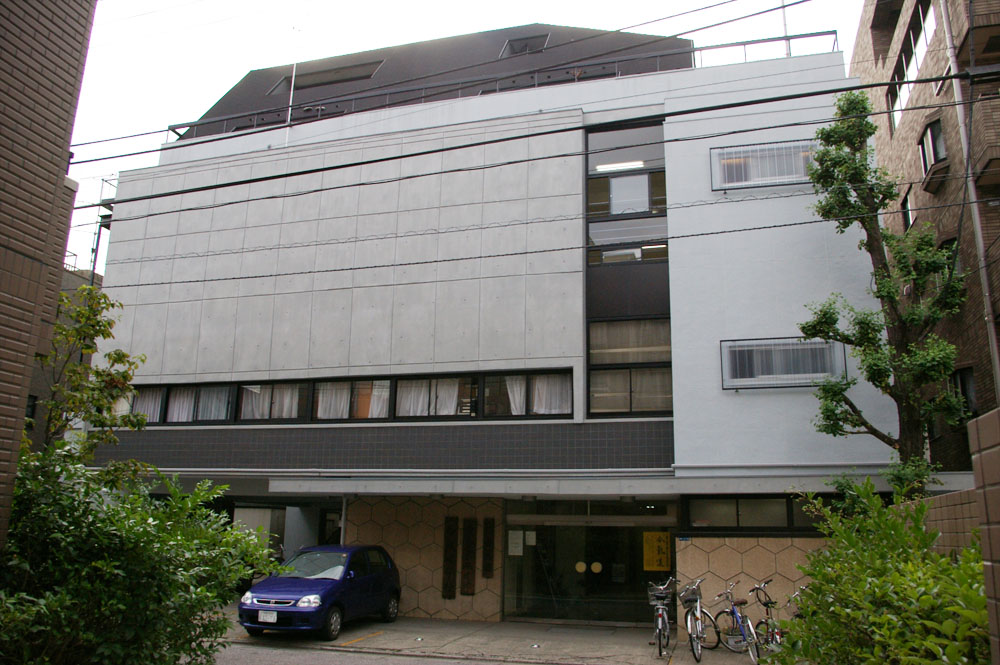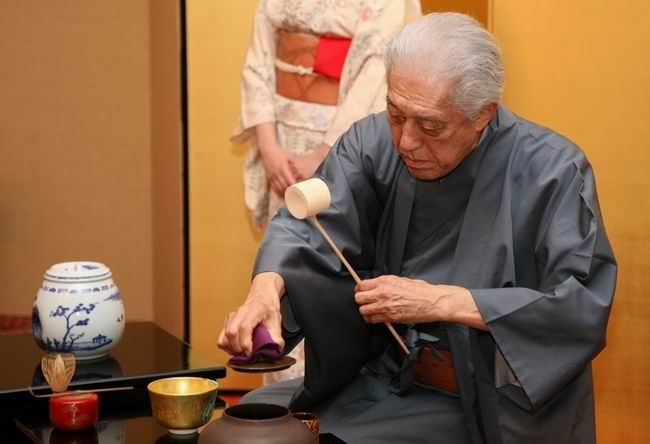|
Sōke
, pronounced , is a Japanese term that means "the head family ouse" In the realm of Japanese traditional arts, it is used synonymously with the term ''iemoto''. Thus, it is often used to indicate "headmaster" (or sometimes translated as "head of the family" or even " grand master"). The English translation of ''sōke'' as "grand master" is not a literal translation but it does see use by some Japanese sources. It can mean one who is the leader of any school or the master of a style, but it is most commonly used as a highest level Japanese title, referring to the singular leader of a school or style of martial art. The term, however, is not limited to the genre of martial arts. Sōke is sometimes mistakenly believed to mean "founder of a style" because many modern sōke are the first generation headmasters of their art (''shodai sōke''; 初代宗家), and are thus both sōke and founder. However, the successors to the ''shodai sōke'' are also sōke themselves. Sōke are general ... [...More Info...] [...Related Items...] OR: [Wikipedia] [Google] [Baidu] |
Grandmaster (martial Arts)
Grandmaster and Master are titles used to describe or address some senior or experienced martial artists. Typically these titles are honorary in nature, meaning that they do not confer rank, but rather distinguish the individual as very highly revered in their school, system, or style. History Asian martial arts traditionally use terms that are usually translated as "teacher" and the use of " master" was a Western invention derived from 1950s United States war veterans returning home with stories of the incredible martial feats of certain individuals and groups. Subsequently, they found their way into martial arts culture as marketing tactics to the extent that the titles are aligned to the 'elderly martial arts master' stock character. In Asian countries, such titles are more commonly reserved for religious leaders and saints. Modern use The use of "master," "grandmaster," etc. is decided within an individual art or organization. The use may be self assigned; for example h ... [...More Info...] [...Related Items...] OR: [Wikipedia] [Google] [Baidu] |
Aikikai
The Aikikai is the original school of Aikido. It is centered on the Aikikai Foundation in Japan, and its figurehead is the Doshu (the family heir of the founder of Aikido). It is represented globally through the International Aikido Federation. Aikikai Foundation The is the original aikido organization. It has been an incorporated entity in Japan since 1940 under the name , then re-registered under the name "Aikikai" after the ban on Aikido practice was lifted by the GHQ in 1948. It is headed by the doshu, the living successor of the founder of aikido. In its name, ''Kai'' (会) simply means assembly or club. The Aikikai Foundation operates Hombu dojo, which is also named Aikido World Headquarters. It is sometimes called the Aikikai Hombu to distinguish it from the headquarters of later aikido organisations. It is located in Tokyo. The term "Hombu" may sometimes be used loosely to refer to the upper echelons of instructors at Hombu dojo, or to the Aikikai Foundation its ... [...More Info...] [...Related Items...] OR: [Wikipedia] [Google] [Baidu] |
:Category:Japanese Words And Phrases ...
{{Commons Words and phrases by language Words Words Words A word is a basic element of language that carries an objective or practical meaning, can be used on its own, and is uninterruptible. Despite the fact that language speakers often have an intuitive grasp of what a word is, there is no consen ... [...More Info...] [...Related Items...] OR: [Wikipedia] [Google] [Baidu] |
Japanese Language
is spoken natively by about 128 million people, primarily by Japanese people and primarily in Japan, the only country where it is the national language. Japanese belongs to the Japonic or Japanese- Ryukyuan language family. There have been many attempts to group the Japonic languages with other families such as the Ainu, Austroasiatic, Koreanic, and the now-discredited Altaic, but none of these proposals has gained widespread acceptance. Little is known of the language's prehistory, or when it first appeared in Japan. Chinese documents from the 3rd century AD recorded a few Japanese words, but substantial Old Japanese texts did not appear until the 8th century. From the Heian period (794–1185), there was a massive influx of Sino-Japanese vocabulary into the language, affecting the phonology of Early Middle Japanese. Late Middle Japanese (1185–1600) saw extensive grammatical changes and the first appearance of European loanwords. The basis of the standard dialect moved ... [...More Info...] [...Related Items...] OR: [Wikipedia] [Google] [Baidu] |
Iemoto
is a Japanese term used to refer to the founder or current Grand Master of a certain school of traditional Japanese art. It is used synonymously with the term when it refers to the family or house that the iemoto is head of and represents. The word is also used to describe a system of familial generations in traditional Japanese arts such as tea ceremony (including ), , Noh, calligraphy, traditional Japanese dance, traditional Japanese music, the Japanese art of incense appreciation (), and Japanese martial arts. and Go once used the system as well. The system is characterized by a hierarchical structure and the supreme authority of the , who has inherited the secret traditions of the school from the previous . Titles An may be addressed by the title or , or by the title or . In English, is often translated as "Grand Master". The 's main roles are to lead the school and protect its traditions, to be the final authority on matters concerning the school, to issue or ... [...More Info...] [...Related Items...] OR: [Wikipedia] [Google] [Baidu] |
Japanese Martial Arts Titles
The Japanese language makes use of a system of honorific speech, called , which includes honorific suffixes and prefixes when referring to others in a conversation. Suffixes are often gender-specific at the end of names, while prefixes are attached to the beginning of many nouns. Honorific suffixes also indicated the speaker's level and referred an individual's relationship and are often used alongside other components of Japanese honorific speech.Reischauer, Edwin O. (2002). Encyclopedia of Japan. Tōkyō: NetAdvance Inc. Honorific suffixes are generally used when referring to the person one is talking to or unrelated people and are not used when referring to oneself. The omission of suffixes implies a high degree of intimacy or close friendship. Usage Although honorifics are not essential to the grammar of Japanese, they are a fundamental part of its sociolinguistics, and their proper use is deemed essential to proficient and appropriate speech. The use of honorifics is ... [...More Info...] [...Related Items...] OR: [Wikipedia] [Google] [Baidu] |
Martial Art
Martial arts are codified systems and traditions of combat practiced for a number of reasons such as self-defense; military and law enforcement applications; competition; physical, mental, and spiritual development; entertainment; and the preservation of a nation's intangible cultural heritage. Etymology According to Paul Bowman, the term ''martial arts'' was popularized by mainstream popular culture during the 1960s to 1970s, notably by Hong Kong martial arts films (most famously those of Bruce Lee) during the so-called " chopsocky" wave of the early 1970s. According to John Clements, the term ''martial arts'' itself is derived from an older Latin term meaning "arts of Mars", the Roman god of war, and was used to refer to the combat systems of Europe ( European martial arts) as early as the 1550s. The term martial science, or martial sciences, was commonly used to refer to the fighting arts of East Asia ( Asian martial arts) up until the 1970s, while the term ''Chinese boxing ... [...More Info...] [...Related Items...] OR: [Wikipedia] [Google] [Baidu] |
Menkyo Kaiden
is a Japanese term meaning "license." It refers to the license to teach used by practitioners of various Japanese classical arts and martial arts certifying some license within the school or ryū. The ''menkyo'' system dates back to the 8th century. Koryū Tradition Although it is most commonly thought to be used for classical martial arts and ways, it can also be used for other arts such as painting ('' sumi-e''), tea ceremony (''chadō''), flower arranging or calligraphy ('' shodō''). Different martial art ''ko-ryū'' use different license; one outline is: * ''Okuiri'' : enter into art. * ''Mokuroku'' : certificate, and entered into official rolls. ** ''Sho Mokuroku'' ** ''Hatsu Mokuroku'' ** ''Go Mokuroku'' * ''Menkyo'': License. ** ''Shoden Menkyo'' ** ''Chuden Menkyo'' ** ''Okuden Menkyo'' ** ''Hiden Menkyo'' * ''Menkyo Kaiden'': Around thirty years' experience. Menkyo Kaiden , (めんきょかいでん) is a Japanese term meaning "license of total transmission." me ... [...More Info...] [...Related Items...] OR: [Wikipedia] [Google] [Baidu] |
Hiragana
is a Japanese syllabary, part of the Japanese writing system, along with ''katakana'' as well as ''kanji''. It is a phonetic lettering system. The word ''hiragana'' literally means "flowing" or "simple" kana ("simple" originally as contrasted with kanji). Hiragana and katakana are both kana systems. With few exceptions, each mora in the Japanese language is represented by one character (or one digraph) in each system. This may be either a vowel such as ''"a"'' (hiragana wikt:あ, あ); a consonant followed by a vowel such as ''"ka"'' (wikt:か, か); or ''"n"'' (wikt:ん, ん), a nasal stop, nasal sonorant which, depending on the context, sounds either like English ''m'', ''n'' or ''ng'' () when syllable-final or like the nasal vowels of French language, French, Portuguese language, Portuguese or Polish language, Polish. Because the characters of the kana do not represent single consonants (except in the case of ん "n"), the kana are referred to as syllabic symbols and no ... [...More Info...] [...Related Items...] OR: [Wikipedia] [Google] [Baidu] |
Iemoto
is a Japanese term used to refer to the founder or current Grand Master of a certain school of traditional Japanese art. It is used synonymously with the term when it refers to the family or house that the iemoto is head of and represents. The word is also used to describe a system of familial generations in traditional Japanese arts such as tea ceremony (including ), , Noh, calligraphy, traditional Japanese dance, traditional Japanese music, the Japanese art of incense appreciation (), and Japanese martial arts. and Go once used the system as well. The system is characterized by a hierarchical structure and the supreme authority of the , who has inherited the secret traditions of the school from the previous . Titles An may be addressed by the title or , or by the title or . In English, is often translated as "Grand Master". The 's main roles are to lead the school and protect its traditions, to be the final authority on matters concerning the school, to issue or ... [...More Info...] [...Related Items...] OR: [Wikipedia] [Google] [Baidu] |
Japan
Japan ( ja, 日本, or , and formally , ''Nihonkoku'') is an island country in East Asia. It is situated in the northwest Pacific Ocean, and is bordered on the west by the Sea of Japan, while extending from the Sea of Okhotsk in the north toward the East China Sea, Philippine Sea, and Taiwan in the south. Japan is a part of the Ring of Fire, and spans an archipelago of 6852 islands covering ; the five main islands are Hokkaido, Honshu (the "mainland"), Shikoku, Kyushu, and Okinawa. Tokyo is the nation's capital and largest city, followed by Yokohama, Osaka, Nagoya, Sapporo, Fukuoka, Kobe, and Kyoto. Japan is the eleventh most populous country in the world, as well as one of the most densely populated and urbanized. About three-fourths of the country's terrain is mountainous, concentrating its population of 123.2 million on narrow coastal plains. Japan is divided into 47 administrative prefectures and eight traditional regions. The Greater Tokyo Area is the most p ... [...More Info...] [...Related Items...] OR: [Wikipedia] [Google] [Baidu] |


.jpg)